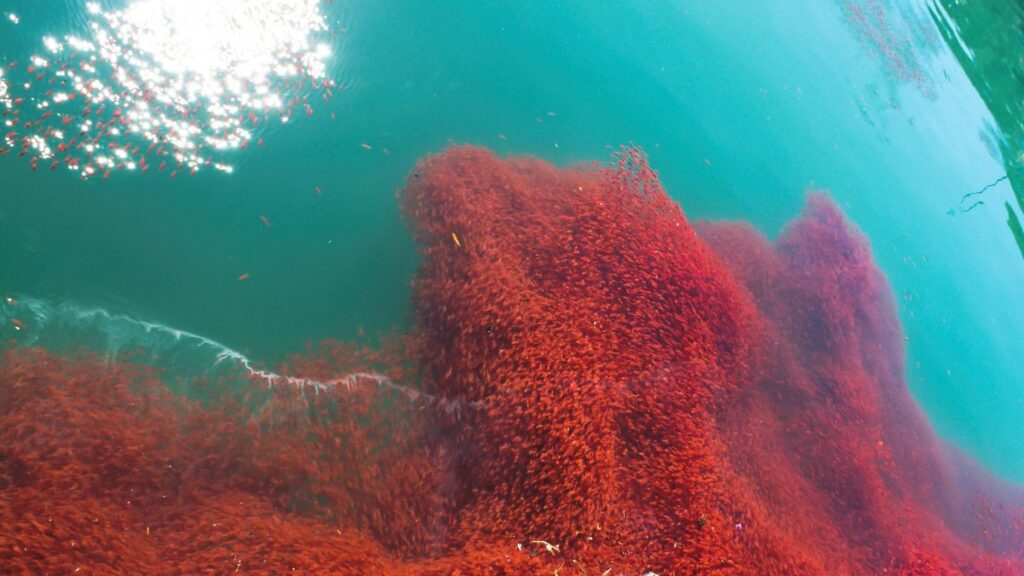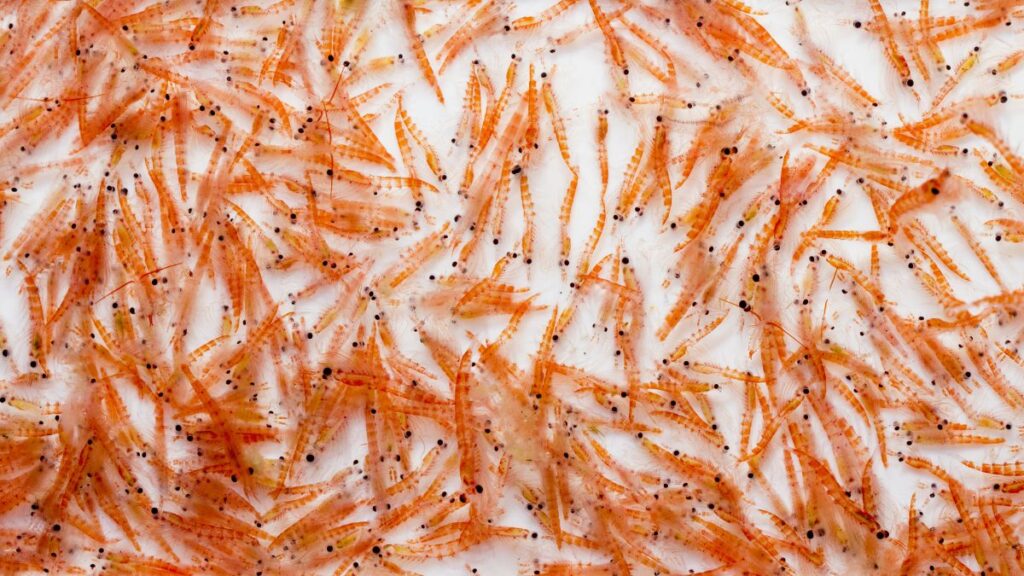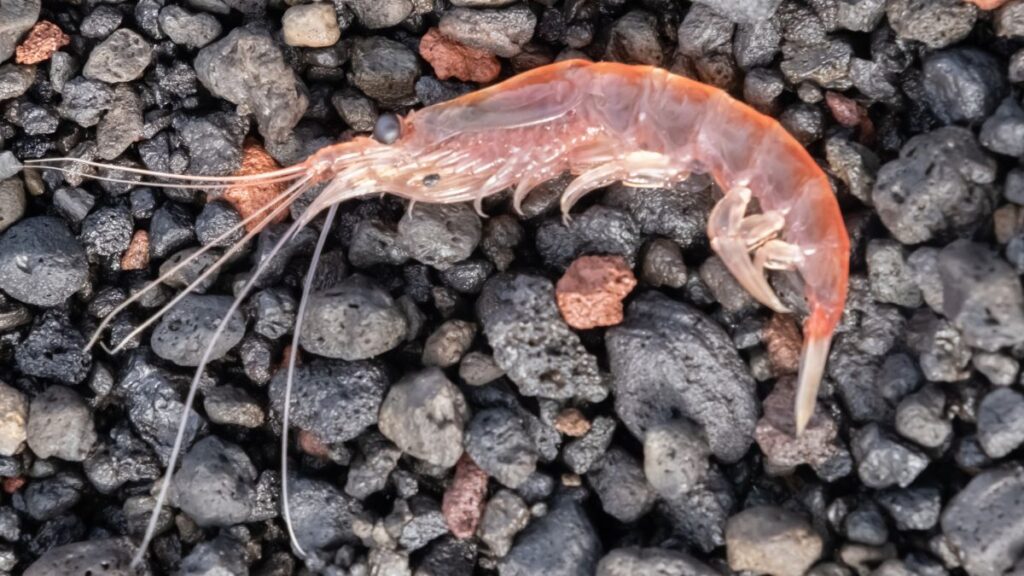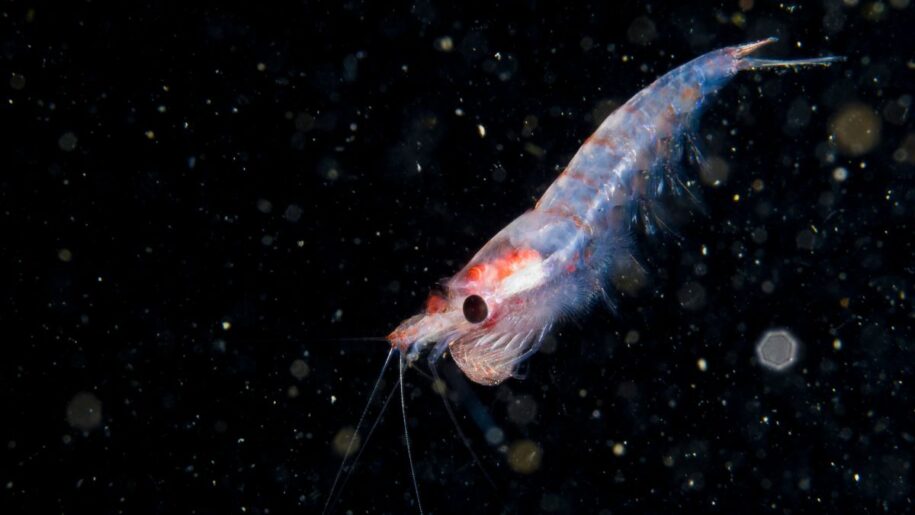The ocean is the greatest habitat on the planet. There are large animals such as the whale shark and the largest of all, the blue whale, which can exceed 30 meters in length. However, it is the small organisms (mostly microscopic) that are part of the base of the food chain that play a very important role in the various ecosystems and in keeping all these titans of the deep alive. This group of organisms is called Plankton.
-Plankton: It is called plankton to the set of organisms that do not have sufficient movements to counteract the currents and float in salty or fresh waters, with movements of vertical displacements of up to 200 meters of depth approximately.
-Phytoplankton: refers to plant plankton, which contain chlorophyll like land plants.
-Zooplankton: refers to animal plankton. Krill is one of the most common types of zooplankton.
Krill are small animals very similar to shrimp that can be found in all the world's oceans and are a fundamental element of the various trophic webs of ocean ecosystems as they are part of the diet of many organisms. The species of krill that is present in the Antarctic Ocean, Euphausia superba, is one of the species with the highest biomass on the planet, of which more than half is consumed by whales, seals, penguins, squid and fish.



Their behavior is gregarious, grouping together in huge shoals consisting of thousands of individuals per cubic meter of water that can extend for kilometers. Sometimes it is even possible to see the large spots in the water caused by the large clusters of krill.
Most krill species make daily vertical migrations to feed. During the day, they remain in deeper waters where they decrease their activity in order to reduce their contact with predators and conserve energy. During the night, they return to surface waters providing food for many species of animals.
They are filter feeders and the vast majority are omnivores. However, within this group of animals we can also find herbivorous and carnivorous species.
With the exception of Bentheuphausia amblyops and Thysanopoda minyops, all krill species are bioluminescent, that is, they can produce light through large complex organs called photophores. This luminescence serves for its protection against predators and also as a tool for communication.



Krill has been used as a food source and supplement for humans and incorporated into feed for domestic animals, but mainly for animals raised in aquaculture. For this reason, its capture in the wild continues to grow very quickly. Between 2010 and 2014 alone, krill capture increased by 39% and in contrast, from 1970 to the present, its population has decreased by 80%.
These small animals, in addition to being endangered as a result of overfishing, are also endangered due to climate change, as they are more susceptible to contracting diseases.
Article written by the biologist Fátima Perez Neira.
Find out more about our sea activities here.
Book your experience with us here.

3 Comments
Ana
Estamos sempre a aprender, entretanto o homem vai destruindo o planeta e tudo aquilo que tem vida. É muito triste pois há muitas histórias de animais que desconhecemos, e muito ainda que temos a aprender com eles.
❤️
Regina Lawson
My brother suggested I might like this blog. He was totally right. This post actually made my day. You can not imagine simply how much time I had spent for this info! Thanks!
Daniela Heaney
Ive read several just right stuff here Certainly price bookmarking for revisiting I wonder how a lot effort you place to create this kind of great informative website